NRAO eNews
Volume 10, Issue 3
22 March 2017
Upcoming Events

ALMA Proposal Writing Workshops
Various Dates: Mar 28 - Apr 5, 2017 | Various Locations

NRAO/LBO Community Day @ University of Michigan
Mar 29, 2017 | Ann Arbor, MI

ALMA Cycle 5 Call for Proposals Submission Deadline
Apr 20, 2017

NRAO/LBO Community Day @ UNAM-Morelia
Apr 25 - 26, 2017 | Morelia, Mexico

American Astronomical Society Meeting
Jun 4 - 8, 2017 | Austin, Texas

2017 Astrobiology Graduate Conference
Jun 5 - 9, 2017 | Charlottesville, VA

Women in Astronomy IV: The Many Faces of Women Astronomers
Jun 9 - 11, 2017 | Austin, TX

Developing the ngVLA Science Program Workshop
Jun 26 - 29, 2017 | Socorro, NM

Measuring Star Formation in the Radio, Millimetre, and Submillimetre
Jul 24 - 26, 2017 | Manchester, United Kingdom

Futures III
Aug 2 - 4, 2017 | Berkeley, CA
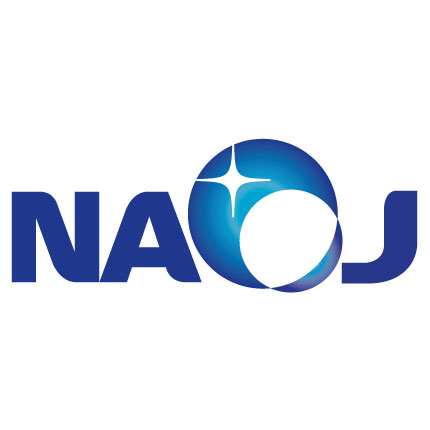
ALMA Long Baseline Workshop
Oct 3 - 5, 2017 | Mielparque Kyoto, Japan

6th VLA Data Reduction Workshop
Oct 23 - 27, 2017 | Socorro, NM
Futures III Registration Open
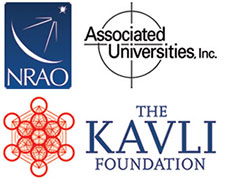
The NRAO has organized a series of three conferences for the community to broadly discuss and seek consensus regarding potential U.S. futures for radio-millimeter-submillimeter (RMS) science in the 2020’s and beyond. Funded by the Kavli Foundation and Associated Universities, Inc., the third and final conference in this series – Futures III – will be 2-4 August 2017 in Berkeley, California and will be attended by scientists from U.S. and international universities, observatories, and laboratories in virtually every field of astrophysics.
Registration for Futures III is now open, and the scientific program and travel information are now available at the conference website.
Futures III will continue discussions and analysis of two key opportunities emerging from the Futures I and Futures II conferences – a next generation Very Large Array (ngVLA) and Spectral-Line Cosmology & Low Frequency Instruments, including the Hydrogen Epoch of Reionization Array (HERA) and related intensity mapping opportunities. An update on other key areas – Cosmic Microwave Background, Pulsars, and Midscale developments – is also planned. Over the past two years, the Kavli meeting series has been a community-wide effort to explore our scientific visions for the next decade, and seeking to develop consensus and support for RMS initiatives on all resource scales in the upcoming decadal survey.
Futures I was held 15-17 December 2015 in Chicago and was structured around the key RMS science themes and community priorities identified in the Astro2010 Decadal Survey. This included fields where radio data was supporting other instruments, and those focused on possible standalone radio astronomy outcomes. Futures I yielded a compelling definition of the transformational science that interests the community and motivates the exploration of the scope and feasibility of the future RMS instrument and technique options.
The community and NRAO selected four areas for deeper discussion at the Futures II, held 3-5 August 2016 in Baltimore: (1) a next generation Very Large Array; (2) a Hydrogen Epoch of Reionization Array; (3) pulsar instrumental and scientific opportunities; and (4) the Cosmic Microwave Background. Parallel sessions broadly discussed potential RMS Flagship and Small/Midscale initiatives associated with these. Flagship options are major investments with widespread community benefit and support that would require funding by or on a scale comparable to the NSF Major Research Equipment and Facility Construction program. Small/Midscale initiatives are investments that might be funded via the NSF Mid-Scale Initiative Program.
We look forward to seeing you in Berkeley in August!
ALMA Cycle 5 Call for Proposals is Now OPEN!
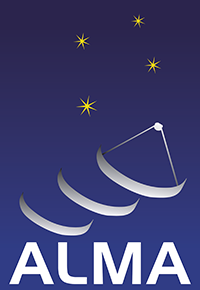
The ALMA Director, on behalf of the Joint ALMA Observatory (JAO) and the partner organizations in East Asia, Europe, and North America, is pleased to announce the ALMA Cycle 5 Call for Proposals (CfP) for scientific observations to be scheduled from October 2017 to September 2018. It is anticipated that 4000 hours of the 12-m Array time and 3000 hours of the Atacama Compact Array (ACA) time, also known as the Morita Array, will be available for successful proposals from Principal Investigators (PIs) in Cycle 5.
ALMA Cycle 5 proposal submission will open at
15:00 UT on Tuesday, 21 March 2017
The Cycle 5 proposal submission deadline is
15:00 UT on Thursday, 20 April 2017
Abstract Submission Open for ngVLA Science Workshop

Abstract submission is now open for the Developing the Next Generation Very Large Array Science Program Workshop. This workshop will focus on the science program that will inform the design concept for the Next Generation Very Large Array (ngVLA) and will be held 26-29 June 2017 in Socorro, New Mexico, USA. If you are interested in contributing a science or technical talk or poster, please visit the workshop abstract submission webpage on or before the 31 March abstract deadline. Registration will be open through 26 May and is free.
The general ngVLA design concept entails an interferometric array with 10X larger effective collecting area and 10X higher spatial resolution than the current Jansky VLA and ALMA, optimized for operation in the frequency range 10 – 50 GHz, with reasonable performance over 1.2 – 116 GHz. The ngVLA opens a new window on the Universe through ultra-sensitive imaging of thermal line and continuum emission down to milli-arcsecond resolution, as well as unprecedented broad band continuum polarimetric imaging of non-thermal processes.
The Scientific Organizing Committee for the workshop is arranging an exciting program that will highlight recent results from the Jansky VLA and ALMA and discuss how these results inspire the planning for the ngVLA. There will also be invited talks highlighting synergies between the ngVLA and future major astronomical facilities, both ground- and space-based, spanning the entire electromagnetic spectrum. The final day of the workshop will include community working group sessions to focus the design parameters on the most exciting science while critically assessing potential design trade-offs.
We look forward to seeing you in Socorro in June!
6th VLA Data Reduction Workshop

Brian Kent
NRAO is pleased to announce the 6th Very Large Array (VLA) Data Reduction Workshop, which will be held 23-27 October 2017 in Socorro, New Mexico, USA.
The main goal of this Workshop is to assist observers with the challenges of VLA data reduction posed by the increased flexibility and complexity of the instrument. We will provide lectures on key topics and allow participants to reduce some fraction of their own data while local expert staff is available for consultation.
Please note that this is an advanced Workshop and, unlike our bi-annual summer Synthesis Imaging Workshops, is not intended for those who are new to radio interferometry. Prior experience with AIPS, CASA, or MIRIAD is required. As we will be using CASA as our main data reduction package, a working knowledge of it would be helpful.
Please visit the Workshop website to register and for more information. Note that space is limited, so please register early. We look forward to welcoming you to NRAO and Socorro next October.
ALMA's Molecular View
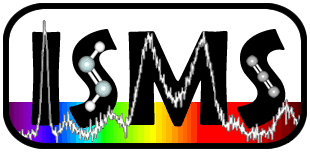
We would like to draw your attention to the upcoming mini-symposium ALMA's Molecular View, held in conjunction with the 72nd International Symposium on Molecular Spectroscopy (ISMS), 19 – 23 June 2017 at the University of Illinois at Urbana-Champaign. The mini-symposium will run the entire week of the conference.
Molecular Astronomy has been an integral component of ISMS for decades. This year, we have arranged a mini-symposium designed to bring together observers, modelers, theoreticians, and experimentalists under the unifying theme of leveraging ALMA's incredible access to our molecular Universe. Any and all research which supports, complements, or directly involves molecular observations with ALMA, from any wavelength of observation, area of theoretical or modeling study, or any laboratory endeavor is welcome.
Ewine van Dishoeck (Leiden) will give a plenary lecture as part of the overall symposium. Additional invited talks by Susanne Aalto (Chalmers), Arnaud Belloche (MPIfR), Michael McCarthy (Harvard-CfA), Chunhua 'Charlie' Qi (Harvard-CfA), and Naoki Watanabe (Hokkaido) will be presented throughout the mini-symposium.
ISMS is a unique meeting with a significant emphasis on providing ample informal collaborative interactions as well as fostering an engaging experience for early-career researchers. There are no poster sessions: all presentations are given as talks. Many undergraduate and graduate students present their first research talks at ISMS, which is committed to providing a safe and encouraging environment for them to develop their public communication skills.
As part of the effort to encourage attendance by early-career researchers, the costs for the conference, including on-campus housing, especially for young scholars, are kept exceptionally low.
We would like to encourage you to submit an abstract for the meeting, and to bring as many of your early-career colleagues as possible.
If you have any questions, please do not hesitate to contact either of us directly.
Call for Study Proposals, NA ALMA Cycle 5 Development Program
The NRAO and the National Science Foundation are pleased to announce a Call for Study Proposals for the North American ALMA Cycle 5 Development program.
This Call is open to the community of scientists from North American ALMA partner countries. The primary objectives of the Cycle 5 Development Program Studies are to:
(a) enable groups in North America to propose ALMA upgrade studies that may later be implemented via the ALMA Development Plan;
(b) support the development of conceptual and detailed designs for ALMA upgrades; and
(c) encourage relevant long-term research and development in areas important for ALMA.
Two categories of proposals are being sought via this Call:
(a) General Studies (funded for 1 year and up to $200,000 USD per award); and
(b) Strategic Studies (funded for 2 years and up to $400,000 USD per award).
Strategic Studies is a new ALMA Development proposal category intended to support in-depth studies aligned with the development priorities identified by the ALMA Science Advisory Committee in A Roadmap for Developing ALMA.
The proposal submission deadline for this Call for Studies is 1 May 2017 at 23:59 EDT.
Questions should be directed to alma_cycle5_development@nrao.edu
ALMA Proposal Writing Workshops

In advance of the ALMA Cycle 5 Call for Proposals, the North American ALMA Science Center (NAASC) has organized a series of ALMA proposal writing workshops at a number of North American institutions in March and April 2017. The goal of these events is to provide users with the knowledge they need to carry out cutting-edge scientific research using the ALMA facilities. We are particularly interested in reaching new users, so no experience with radio astronomy is required to participate!
These ALMA events are one- to two-day workshops designed in cooperation with institutions across North America, and hosted by experienced local postdocs as part of the ALMA Ambassadors program. Participation is free. No registration fees will be charged. These events include science talks, an introduction to submillimeter interferometry, and hands-on workshops designed to assist you in proposal preparation, observation planning, and data reduction for ALMA Cycle 5. You will need to bring your laptop to participate in the hands-on sessions, and we will provide access to the free software that you can download, as well as a small dataset to be used in the demonstrations.
If you are interested in attending an ALMA Proposal Workshop, see the list below for the nearest event!
ALMA Long Baseline Workshop: 1st Announcement
Mielparque Kyoto, 3 - 5 October 2017
The Atacama Large Millimeter/submillimeter Array (ALMA) is now the most powerful mm/submm interferometer in the world, and it is producing 500+ refereed papers in nearly all fields of astronomy and astrophysics. In particular, the ~0.02 arcsecond submm images obtained during the long baseline campaign in 2014 (ALMA Partnership et al. 2015) have led to numerous publications and follow-up observational and theoretical studies, signifying the extreme importance of the high-resolution imaging capabilities of ALMA.
The scope of this three-day workshop is to: (1) review the high-resolution ALMA science results obtained to date; (2) identify detailed science cases for the future baseline expansion of ALMA (e.g. angular resolution of < 0.01 arcsec); (3) discuss the scientific and technical requirements such as angular resolution, number and size of the antennas, sensitivity and operational frequency; and (4) review the technical feasibility studies for longer baseline imaging. We envision the output of this workshop to be used as a guideline to pave the pathway for the future expansion of ALMA.
We welcome contributed talks related to the long baseline science and technical aspects pertaining to the expansion of the longest baselines. We will also have plenty of space for poster presentations.
Registration will begin soon. Pre-registration is available at the workshop website.
ALMA Program News
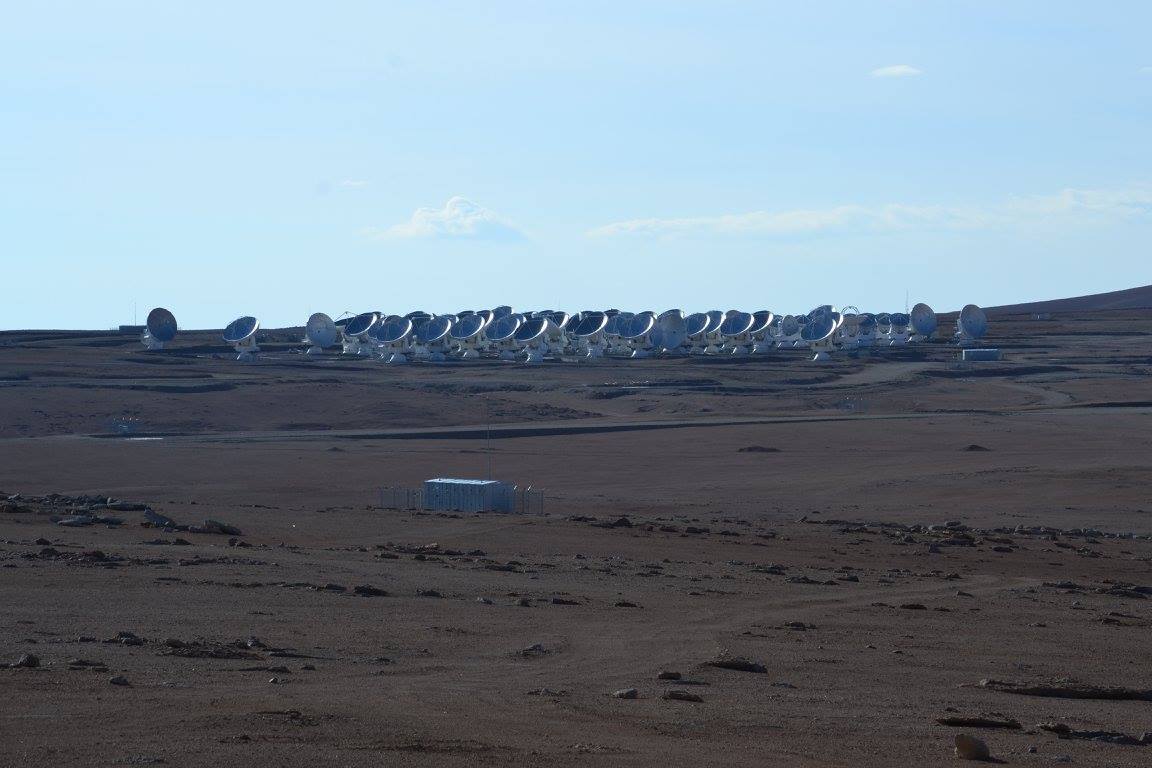
Al Wootten
The ALMA Array in its compact C40-1 configuration.
[click to enlarge]
Cycle 4 Science Observing
ALMA has commenced operations again after an unusually intense altiplanic winter and the February engineering period. Investigator observations for Cycle 4 have resumed in C40-1 (3.7 arcsec beam at 100 GHz, 155m longest baseline). The configuration will expand again with the move to C40-3 (1.5 arcsec beam at 100 GHz, 15 — 460m baselines) in mid-April. All but a handful of North American datasets from Cycles 3 and before the engineering break in Cycle 4 are now delivered or in the reduction process. There are 777 post-proprietary datasets available in the ALMA Archive.
Cycle 5 Call for Proposals
A Call for ALMA Proposals with detailed information on Cycle 5 was issued on 21 March 2017, with a deadline for proposal submission on 20 April 2017.
NRAO will conduct nine Community Days and Proposal Planning Events in March and April 2017 in advance of the ALMA Cycle 5 proposal deadline. These events are one to two day workshops organized and led by experienced local postdocs from the ALMA Ambassadors program and/or North American ALMA Science Center staff with a focus on the capabilities of ALMA, millimeter-submillimeter interferometry observing techniques, and the tools required to design ALMA observing programs and submit proposals.
ALMA Development
A Call for Proposals for ALMA Development Studies was released 1 March 2017. The deadline for proposals is 1 May 2017 for funding during Fiscal Year 2018 — 1 October 2017 through 30 September 2018 — depending on the U.S. Federal budget process. We welcome any member from within the North America ALMA Operations Partnership to submit a proposal to investigate a potential ALMA upgrade (hardware, software or advanced techniques).
Measuring Star Formation in the Radio, Millimetre, and Submillimetre Second Announcement
24-26 July 2017
The University of Manchester
Manchester, United Kingdom
Event Website

The current generation of radio, millimetre, and submillimetre telescopes (ALMA, ASKAP, eMERLIN, VLA, LOFAR, MeerKAT) and the next generation (SKA, ngVLA) have the capability to detect emission from star-forming regions at much better sensitivities than previous telescopes working in these bands. This opens up new possibilities for using star formation tracers including synchrotron emission, free-free emission, and higher-order recombination line emission to measure star formation rates. As these tracers are unaffected by dust extinction and as many of the tracers are directly connected to young stellar populations, they could potentially yield more accurate star formation rates than those measured using ultraviolet, optical, or infrared data.
The goal of this meeting is to bring together researchers who are exploring the ways to measure star formation rates in the radio, millimetre, and submillimetre bands. Topics of discussion will include the following:
- Development of the theory and techniques for measuring star formation rates in the radio, millimetre, and submillimetre bands.
- Application of these metrics to studying star formation in both normal and extreme star forming environments in the local universe.
- Application of these metrics to studying star formation at high redshift.
- Studies of the spectral energy distribution from radio to infrared bands with an emphasis on disentangling synchrotron, free-free, and dust emission.
- Separation of emission from AGN and emission from star formation activity.
- Comparisons of radio, millimetre, and submillimetre star formation rates to rates measured in other bands.
- Discussions on potential future technical developments that will aid in measuring star formation in these wavebands.
- The abstract submission deadline is 14 April 2017, and the registration deadline is 15 May 2017. To register, please use the online registration form.
Partial funding (approximately £150 per person) is available for a limited number of students who are presenting talks at the meeting. Students who wish to apply for the funds should indicate so in the other comments section of the application form.
This event has received funding from the European Union's Horizon 2020 research and innovation programme under grant agreement No. 730562.
Grote Reber Doctoral Fellowship Program
The NRAO Grote Reber Doctoral Fellowship Program enables Ph.D. students in the final years of their thesis to conduct research at one of the NRAO sites under the supervision of an NRAO advisor. The program is jointly sponsored by NRAO and the student's home university, and supports thesis projects in radio astronomy, radio instrumentation, or computational techniques. Reber Fellowships cover student stipends for a period of up to two years, and they include an annual allocation for student travel to attend a conference.
Prospective students should identify an NRAO scientist or engineer who will serve as the advisor, and the NRAO staff member can then apply for the program on behalf of the student. Applications are accepted twice per year, with the next deadline being 14 April 2017 for positions beginning in September 2017.
Please visit the Reber Fellowship website for a complete description of the program and the application process. For more information on the Reber Fellowship or other NRAO student
programs, contact Jim Braatz.
Robert L. Brown Outstanding Doctoral Dissertation Award
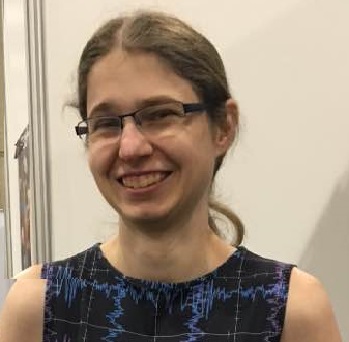
Jennifer Weston
[click to enlarge]
The 2016 Robert L. Brown Outstanding Doctoral Dissertation Award has been awarded to Dr. Jennifer Weston for her thesis on Radio Observations as a Tool to Investigate Shocks and Asymmetries in Accreting White Dwarf Binaries. Her research was based on long-term multi-frequency Very Large Array observations of novae and symbiotic stars, i.e., mass-transfer binary systems containing a white dwarf. Dr. Weston was able to show, among other things, that some classical novae emit synchrotron emission shortly after outburst, and she explored the degree to which symbiotics are powered by shell burning or mass accretion on the white dwarf.
Jennifer is currently an NRAO Postdoctoral Fellow at the Green Bank Observatory. She received her Ph.D. in 2016 from Columbia University, and her B.S., Summa Cum Laude, from Brandeis University in 2008.
The award will be presented on 13 April 2017 at NRAO Headquarters in Charlottesville, Virginia after which Jennifer will deliver a colloquium based on her thesis research.
The Robert L. Brown Outstanding Doctoral Dissertation Award is administered by Associated Universities, Inc. (AUI) and the NRAO on behalf of Bob Brown’s friends and family to honor Bob’s life and career. The Award is given each year to a recent recipient of a doctoral degree from any recognized degree granting institution in the United States, that is substantially based on new observational data obtained at any AUI facility and is considered to be of an exceptionally high scientific standard. Applications for the 2017 Award should be sent to rlbaward@nrao.edu no later than 31 December 2017.
Interferometry and Synthesis in Radio Astronomy
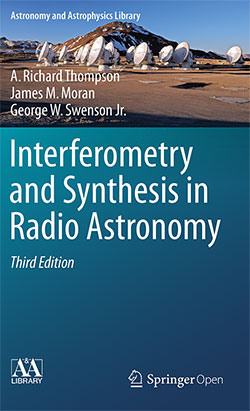
The third edition of the textbook Interferometry and Synthesis in Radio Astronomy by Dick Thompson, Jim Moran, and George Swenson has just been published by Springer International.
This book has been a popular reference on radio interferometry since the first edition appeared in 1986. The new edition is 25% longer than the second edition of 2001, has been extensively revised, and contains much new material. Advanced data restoration techniques such as compressive sensing are described; and the section on visibility model fitting has been greatly expanded. The discussion of atmospheric propagation and site characterization has been thoroughly updated. Modern spectral analysis techniques such as polyphase filter banks are explained, and a generalized treatment of correlation of quantized signal is included. Tutorial appendices have been added on the radiometer equation, basic Fourier transform theory, the discrete Fourier transform, and the derivation of the structure function for two- and three-dimensional turbulence.
This book is available as an Open Access publication. It is published under the Creative Commons Attribution License and can be downloaded by anyone free of charge at www.link.springer.com, and hardbound copies are available for $60 from Springer, Amazon.com, and other bookstores. Softbound “my copy” versions are available for $25 at institutions that have Springer subscriptions. Open Access availability was made possible by publication grants from Harvard University and the National Radio Astronomy Observatory.
Reflectionless Filters

A new textbook titled Reflectionless Filters by NRAO scientist/research engineer Matthew A. Morgan has recently been published by Artech House.
This practical resource introduces progressive techniques in the creation of sophisticated reflectionless filter topologies — filter topologies that have identically zero reflection coefficient at all frequencies. Practical implementations are discussed along with their advantages when compared to classical absorptive filters, and their benefits in real-world systems such as up/down converters, multiplier chains, broadband amplifiers, analog-to-digital converters, and time-domain applications.
This book offers insight into the innovative process of developing reflectionless filters from first principles using both lumped elements and transmission lines. Tools for the creation of reflectionless multiplexers, matched sloped equalizers, and advanced, high-order, and non-planar topologies are also presented.
Matthew Morgan is a scientist/research engineer at the Central Development Lab at the NRAO in Charlottesville, Virginia.
Recent Media Releases
|
Protostar Blazes Bright, Reshaping Its Stellar Nursery |
|
|
The Dawn of a New Era for Supernova 1987A |
Career Opportunities
ALMA Director: The Joint ALMA Observatory in Santiago, Chile is actively recruiting a Director to provide unified leadership for ALMA operations and development. The ALMA Board, responsible for governance and oversight and consisting of members representing the parties, Executives, and astronomy community invites applications for the position of ALMA Director. The successful applicant will be expected to take up the post on 1 April 2018, when the current ALMA Director completes his term. For consideration, please email your curriculum vitae and letter expressing your interest to Dr. David Silva at almasearchcommittee@gmail.com. Please send three letters of recommendation to resumes@nrao.edu .
Director for the Central Development Laboratory: The NRAO is actively recruiting for a Director for the Central Development Laboratory (CDL). The CDL Director is expected to ensure that the Laboratory will be engaged in R&D essential for the future needs of radio astronomy, working where appropriate in partnership with the astronomy community. The position will be located in Charlottesville, Virginia.
CASA Lead: The NRAO is actively seeking a candidate with a combination of software, management, and ideally, astronomy experience to join the Data Management and Software Department as the CASA Group Lead. The CASA Group is responsible for the Common Astronomy Software Applications (CASA) package, and the CASA pipelines, which provide heuristic-based automated processing for calibration and imaging. The position will be located either in Charlottesville, Virginia or Socorro, New Mexico.
ALMA- Head of Data Management Group: The Joint ALMA Observatory in Santiago, Chile is actively recruiting a Head of Data Management Group with extensive experience for coordinating and organizing data management activities at the ALMA observatory in Chile. The Joint ALMA Observatory (JAO) is operated by ESO, Associated Universities Inc. / National Radio Astronomy Observatory (AUI/NRAO) and the National Astronomical Observatory of Japan (NAOJ). The Head of the Data Management Group will provide ongoing management leadership for system astronomy and archived content management staff, and continue to lead efforts to maximize the performance impact of the observatory data delivery through continued improvement, including software testing of the on-line system, and coordination and integration of Extension and Optimization of Capabilities activities.
From the Archives
Ellen Bouton

[click to enlarge]
About this month's photo: Walking the plank? Ken Kellermann, Dave Hogg, Fred Lo, and Mark Adams negotiate a precarious exit from Charlottesville's Edgemont Road building during construction in March 2004. From almost the moment that NRAO moved into the original Charlottesville building in early 1965, the building was too small. There were numerous but ultimately unsuccessful efforts over many years to build an addition. Finally, success! Construction of an addition, including a major remodeling of the main entrance – site of this photo – began in May 2003, and occupancy of the new space was approved in April 2005. During construction, work continued as usual (sort of) in the original part of the building, despite noise, dust, and obstacles. Of course, because of the growth of ALMA, the building when completed was still too small, so the Central Development Lab is still in a separate building!
From the Archives is an ongoing series illustrating NRAO and U.S. radio astronomy history via images selected from our collections of individuals' and institutional papers. If readers have images they believe would be of interest to the Archives, please contact Ellen Bouton.


